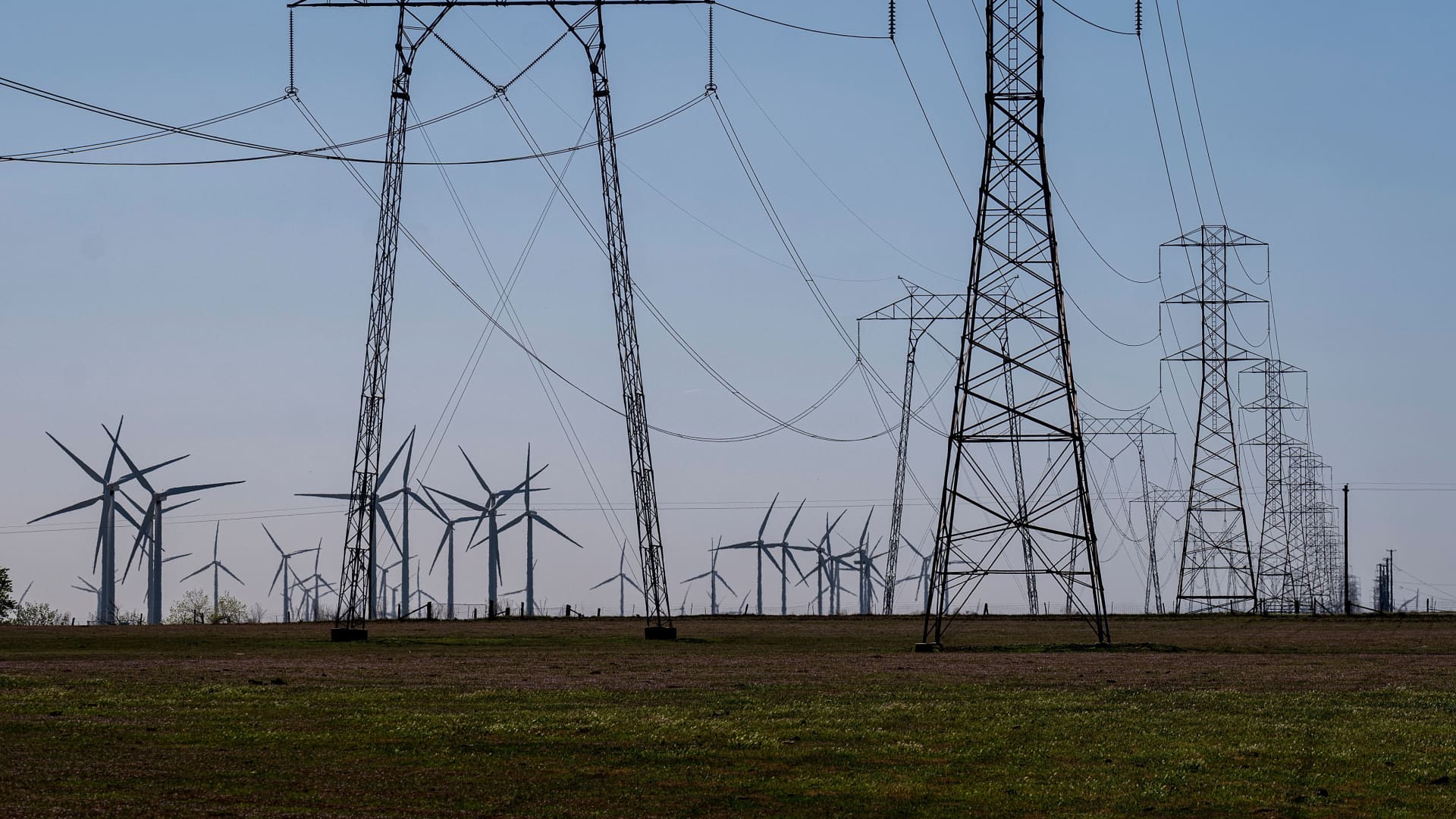America’s electrical grid is being pushed to the breaking point, and California, parts of the Midwest and parts of the South Central United States are at “high risk” for energy shortfalls, says the not-for-profit organization charged with managing and evaluating the grid.
“High risk” regions, marked in red on the map, may see shortfalls at “normal peak conditions,” according to the 54th annual assessment from the North American Electric Reliability Corporation released Thursday.
The reasons for the shortfalls vary.
In the Midwestern states and Ontario, more power generation is being retired than is being added back online, NERC’s Mark Olson told reporters Thursday. Projected energy shortfalls have been projected in that region since 2018, Olson said.
In California, the risk is due to a “variable resource mix” and “demand variability,” Olson said. That means there’s a lot of renewable energy in the state, and its generation is not coordinated with the times people need the most energy. NERC predicts that demand could fall below supply for 10 hours during peak summer months in 2024.
Much of the rest of the Midwest and the rest of the Western part of the United States are at “elevated risk” (yellow on the map), which means shortfalls may occur in extreme conditions, like during severe weather or hot spells where everyone is running air conditioners. In New England, the elevated risk comes in the winter when people use generators that depend on natural gas.
“The natural gas capacity can be insufficient for generators, leading to use of backup fuels, stored liquid fuels, and there are risks to being able to maintain sufficient fuel storage during long duration events,” Olson said.
The Southwest could also suffer when demand is high and wind energy generation is low in the region.
‘Extraordinary times’
“We are living in extraordinary times from an electric industry perspective,” John Moura, the director of reliability assessment at NERC, said on Thursday.
Increasing awareness of climate change is pushing utilities to phase out fossil fuel-based sources of energy that generate carbon emissions. Renewables like wind and solar don’t contribute to climate change, but have period where they don’t generate any energy (when the sky is dark or the wind is still).
Renewables also don’t necessarily map to where demand is, unlike fossil fuels, which can be transported and burned near where they’re consumed. That means more transmission lines are needed, and building them can take from seven to 15 years, Moura says.
Another area of note, according to NERC, is the increased power demand of cryptocurrency mining and the need to plan for energy usage there.
Then there’s the weather. It’s tricky to tie particular extreme weather events to climate change, but it’s generally true that a warmer world is a wetter one, according to NASA climate scientists.
“Year after year, we’ve seen extreme weather leading to increased reliability impacts. And so when we look at events over the last several years, it’s clear that the bulk power system is impacted by extreme weather more than it ever has,” Moura told reporters on the media call.
These factors are placing increased strain on the grid, and NERC representatives urge grid operators to be conservative in their planning.
“Managing the pace of our generation retirement and our resource mix changes to ensure we have enough energy and essential services are an absolute necessity,” Moura told reporters on the call. “We need to work with the entire ecosystem to make sure we’re managing that base, and to be very clear that we’re not retiring generation prematurely — that is done in an orderly fashion and especially in areas that are right on the edge.”
For its annual long-term electricity security assessment, NERC looks at the coming decade, but energy and capacity risk assessment goes out for the coming five years, from 2023 to 2027. There are too many moving parts and uncertainties for a risk assessment past the next five years to be worthwhile, according to NERC.
The Federal Energy Regulatory Commission certified NERC to measure and enforce safety standards for the energy grid in the United States in 2006. NERC is subject to the oversight of FERC, which is the federal governmental agency in charge of regulating interstate electricity transmission.
